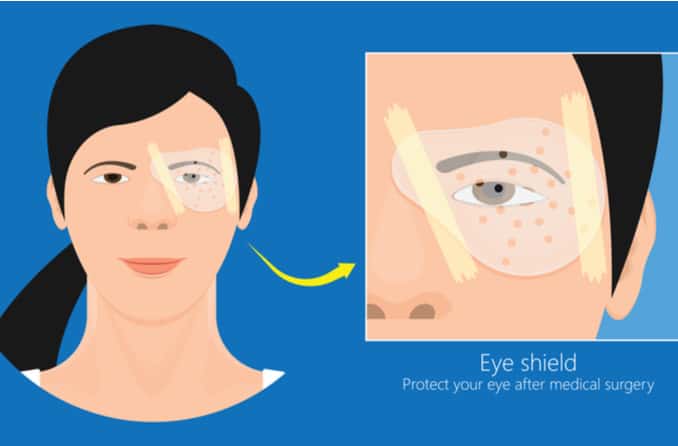Detached retina recovery

The detached retina recovery process can be a little different for everyone. A patient’s health condition, type of surgery, detachment severity and detachment location can all factor into the recommended post-op precautions — and how long it takes to get back on their feet.
Certain precautions will apply to nearly every patient, while other factors (like expected recovery time) may vary.
It can take several weeks or months for someone’s vision to fully recover after detached retina surgery, but most discomfort will go away within the first week.
SEE RELATED: What is retinal detachment?
There are three types of retinal detachment surgery: scleral buckle, vitrectomy and pneumatic retinopexy.
Recovering from a scleral buckle or vitrectomy
Scleral buckling surgery is a common way to treat a detached retina. During the procedure, a surgeon attaches a silicone band around the eye, which forces the eye inward and reduces pressure on the retina, allowing it to heal.
A vitrectomy can be used as an alternative to a scleral buckle, but they can also be used together in the same operation. During a vitrectomy, some or all of the fluid inside the eye (vitreous fluid) is removed and replaced with a silicone oil. This pushes the detached portion of the retina back into place and allows it to heal.
After either surgery, the affected eye might feel a little painful, achy or scratchy. This can last for a couple days, according to UWHealth at the University of Wisconsin.
The patient will be asked to wear an eye patch or metal eye shield until their first follow-up appointment. Afterward, they will probably be asked to continue wearing it while sleeping, even during short naps.
A surgeon may inject a bubble of gas into the eye during surgery. The bubble is used to hold the detached retina in place until it can heal. In this case, a patient will need to hold their head tilted in a specific position until the bubble goes away on its own in a few days.
Low-stress activities can usually be resumed shortly after surgery. These include watching TV, walking, reading, and going for rides in the car, according to the University Health Network (UHN) in Toronto.
Other activities will need to be avoided until a doctor’s further notice, UHN notes. These include tiring physical activities, flying in an airplane, rubbing your eye, driving and lifting anything heavier than 10 pounds.
The time it takes to fully recover from a scleral buckle or vitrectomy depends on several things, many of which are out of a patient’s control. Most of the uncomfortable symptoms will subside within the first few days, although the full healing process will take longer — as long as several months.
Most normal activities can be resumed sometime within the first few weeks. This depends on the surgeon’s assessment of the patient’s healing process.
Sticking to the surgeon’s list of precautions and safety measures minimizes the chance of infection or injury at the surgery site.
SEE RELATED: Retinal tear surgery
Recovering from pneumatic retinopexy
A surgeon may decide that more intensive retinal detachment surgery isn’t needed, instead choosing to treat the detached retina using only the injection of the gas bubble mentioned above. This is called pneumatic retinopexy.
Because this is a less invasive procedure, it can usually be done in an ophthalmologist’s office instead of at a hospital. The recovery process tends to be shorter and more mild than a scleral buckle or vitrectomy.
Mild discomfort will occur after surgery, but a surgeon will prescribe medication to improve comfort as much as possible.
During the first day or two, the surgeon may suggest wearing an eye patch or shield to prevent accidental injury to the eye.
The patient will need to maintain the same head position for most of the day to keep the bubble in place. This period typically lasts between five and eight days, according to the American Academy of Ophthalmology (AAO). The head position needs to be held for at least 16 hours a day, with 15-minute breaks every hour.
Daily antibiotic eye drops may be prescribed to prevent an infection.
Air travel will need to be avoided for a while, since it can cause the air bubble to expand inside the eye. Avoiding other activities, like strenuous exercise and heavy lifting, may also be advised.
Like every form of surgery for retinal detachment, vision can take weeks, sometimes months, to return to its peak level.
The doctor will provide a list of symptoms that could signal a complication. While serious complications are not common, it’s important for a patient to keep these in mind during the healing process.
After surgery, long-term precautions should be taken to minimize the chance of another detachment. Physical impact can be limited by protecting the eyes with sport or safety glasses with polycarbonate lenses during contact sports or outdoor activities.
Additionally, maintaining a schedule of routine eye exams allows your eye doctor to spot any retinal abnormalities as early as possible.
Page published on Tuesday, October 27, 2020






